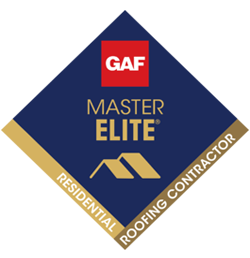
Your roof plays a critical role in your home’s energy efficiency. Acting as the first line of defense against the elements, your roof regulates temperature, reduces energy consumption, and contributes to your overall comfort. Whether it’s keeping your home cool in the summer or warm in the winter, a well-designed and maintained roof ensures that your heating and cooling systems don’t have to work overtime, saving energy and reducing utility bills.
One key factor is the roof’s ability to reflect or absorb heat. Light-colored or reflective roofing materials, for example, help reduce heat absorption, making them ideal for hot climates like we experience in Georgia. Darker roofs, on the other hand, are better suited for colder regions, as they retain heat more effectively.
Insulation beneath the roof further enhances its efficiency. Proper insulation reduces heat transfer, keeping indoor temperatures stable and minimizing energy loss. Ventilation systems also contribute, allowing hot air to escape in summer and preventing moisture buildup in winter, which can affect both energy efficiency and structural integrity.
By selecting the right materials, ensuring proper installation, and maintaining your roof, you can significantly enhance your home's energy efficiency. A roof isn't just a shelter—it’s a vital component in creating an energy-smart home. That’s why it’s so important to look at roofing companies near you to find the one you trust to inspect and maintain your roof.
Which Roofing Materials Are the Most Efficient?
The choice of roofing material significantly impacts your home’s energy efficiency. Each material has unique properties that influence its ability to reflect sunlight, insulate, and manage heat transfer. Selecting the most efficient option depends on your climate, budget, and aesthetic preferences.
Metal roofs, for instance, are highly energy-efficient due to their reflective surfaces. Coated with special finishes, metal roofs can deflect up to 70% of solar heat, making them an excellent choice for warmer climates. They are also durable and recyclable, offering long-term environmental benefits.
Asphalt shingles, the most common roofing material, vary in efficiency. Opt for “cool roof” shingles designed to reflect more sunlight and absorb less heat than standard options. While cost-effective, they may not last as long as other materials.
Clay and concrete tiles are naturally insulating, keeping homes cooler in hot climates. Their thermal properties make them efficient, but they are heavier and may require reinforced structures.
Innovative options like solar shingles integrate solar energy generation with roofing, combining efficiency with sustainability. Additionally, green roofs, which incorporate vegetation, provide natural insulation and reduce energy demands for heating and cooling.
Choosing energy-efficient roofing materials not only cuts energy costs but also enhances comfort and aligns with sustainable living goals.
Why Insulation Matters
Insulation is a cornerstone of energy-efficient roofing, playing a vital role in maintaining a comfortable and consistent indoor temperature. By minimizing heat transfer, insulation keeps warm air inside during the winter and blocks heat from entering during the summer, reducing the strain on your heating and cooling systems.
Roof insulation comes in various forms, including fiberglass, foam, cellulose, and reflective barriers. Each type is designed to suit different climates and roofing structures. For example, spray foam insulation provides an airtight seal, ideal for reducing energy loss in areas with extreme temperatures. Reflective barriers, on the other hand, are perfect for hot climates as they deflect radiant heat away from the home.
The efficiency of roof insulation is measured by its R-value, which indicates its resistance to heat flow. The higher the R-value, the better the insulation performs. Ensuring your roof insulation meets or exceeds local building codes can have a direct impact on energy savings and comfort.
Proper installation is equally important. Poorly installed insulation can create gaps, allowing heat to escape or infiltrate, undermining its effectiveness. Investing in high-quality insulation and professional installation pays off in lower energy bills, reduced environmental impact, and a more comfortable living space year-round.
Why Ventilation Matters
Proper roof ventilation is a key factor in energy efficiency and home comfort. It works by regulating airflow, preventing heat buildup in summer and moisture accumulation in winter. Without adequate ventilation, your roof space can become a hotbox in warmer months, forcing your cooling system to work harder and increasing energy costs.
In winter, insufficient ventilation can lead to moisture issues, such as condensation, which may cause insulation to lose its effectiveness. This can result in higher heating bills and even structural damage over time, like mold growth or rot.
A balanced ventilation system typically includes intake vents at the roof's edge (eaves or soffits) and exhaust vents near the peak (ridge or gable vents). This design promotes continuous airflow, drawing in cool air while expelling hot, humid air.
Energy-efficient ventilation systems can be enhanced with features like solar-powered fans, which boost airflow without adding to electricity costs. Combining good ventilation with proper insulation creates a synergy that optimizes energy savings and roof longevity.
Investing in a well-ventilated roof not only reduces energy consumption but also extends the life of your roofing materials and improves indoor air quality. It’s a simple yet impactful step toward a more efficient and sustainable home.
Maximize Energy Efficiency with Regular Roof Maintenance
Regular maintenance is essential to ensure your roof operates at peak efficiency. A well-maintained roof reduces energy consumption, extends its lifespan, and protects your home from costly repairs.
Start with routine inspections. Check for damaged shingles, cracks, or leaks at least twice a year and after severe weather. Promptly addressing these issues prevents heat or cold from entering your home and keeps your roof’s insulation intact.
Clean gutters and downspouts regularly to prevent water buildup and potential roof damage. Clogged gutters can lead to ice dams in winter, which compromise insulation and ventilation, reducing energy efficiency.
Keep your roof free of debris like leaves or branches, as they can trap moisture and accelerate material deterioration. For homes in shaded areas, watch for moss or algae growth, which can retain moisture and reduce reflective coatings’ effectiveness. Use appropriate cleaning solutions to remove them without damaging the roof.
Inspect and maintain roof ventilation systems to ensure proper airflow. Blocked vents can cause heat buildup or moisture accumulation, affecting insulation and reducing energy savings.
Finally, consider periodic professional inspections. Roofing experts can identify hidden problems and suggest improvements, such as resealing or applying reflective coatings, to enhance efficiency. Consistent care keeps your roof energy-efficient and your home comfortable year-round.
Looking for Roofing Companies Near You?
You’ve come to the right place. At Top Tier Roofing, we’re proud to offer high-quality residential and commercial roofing services. Additionally, we have significant experience repairing and replacing gutters. Have any questions about what we can do for you? Don’t hesitate to reach out to us today!
Subscribe to Top Tier Roofing & Restoration's Blog





Comments